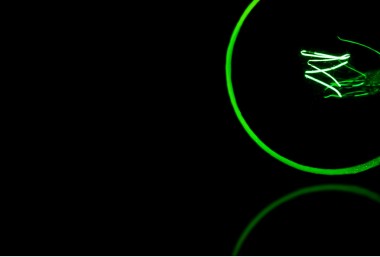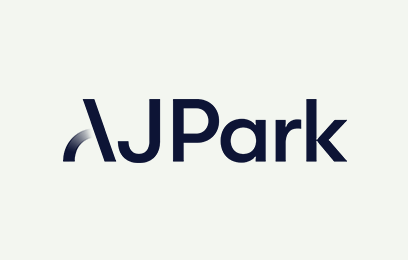Intellectual property (IP) may be a business’ most valuable asset. Patents, copyright, trade marks and registered designs all provide different types of IP rights that can protect an innovation. In fact, a single product or innovation may be eligible to be protected by multiple IP rights.
What's the difference between patent protection and design protection?
Patents
A patent protects inventions. Inventions are effectively the concept residing in a new product or process. A patent gives the owner an exclusive right for a specific term to prevent others from using the patented invention. In most countries, including New Zealand, the term is 20 years.
The purpose of this exclusive right is to provide a valuable business tool that can be used to enhance commercial success. This can be to protect the market for the product, to generate value in the business for an exit, to help attract investors, or as a bargaining chip for use against competitors.
A patent protects the concept residing in a product or process, but you cannot get a patent for an idea without also explaining how to put the idea into practice. For example, you cannot get a patent for the idea of time travel, unless you can demonstrate how it can be made to work.
Most patents are filed for new products, machines, electronics, compositions, processes, and software.
Innovations should be patented if they are likely to be commercially valuable and if allowing others to copy the invention would otherwise have a significant impact on profitability.
Registered designs
A registered design is a legal right that protects the way a product or part of a product looks, but not the way it works.
A registered design protects the visual features of an article. Sometimes, the protection of visual features is important to help stop others making a product that looks the same or similar. A registered design should be filed if the appearance of the product is commercially important. A simple question to ask is ‘how annoyed would you be if someone made and sold a product that looked the same?’. For some products, buyers are not influenced by product shape, such as for industrial equipment. But for consumer products, product shape protection may be important.
Examples of products that can be protected by registered designs include almost any physical object, such as consumer packaging, machinery, toys, furniture, extrusion cross-sections, jewellery, clothing, and patterns on wallpaper and textiles. The first New Zealand registered design for an animal ear tag was filed in 1952 and since then over 100 different ear tag designs have been protected.
A design registration lasts 15 years in New Zealand.
What does an innovation need to have to qualify for legal protection?
Patents
To get a patent, the innovation must be new and inventive. It is not possible to get a patent for something that is already in use or published about. An inventor must hence keep their invention confidential if patent protection is desired. It is possible to get a patent for improvements on old technology. Most patents are for improvements to old technology. The level of improvement does not need to be high. The first New Zealand patent for telephone technology was filed in the late 1800s and since then, tens of thousands of New Zealand patents have been filed for improvements.
It is critical that details of the innovation are not revealed, sold or advertised to the public before a patent application is filed. If anyone has used or published the innovation, it may not qualify for patent protection in most countries of the world.
Registered designs
To qualify for registered design protection, the product shape must be new and distinctive.
It is important that the product design is kept confidential and not commercialised or published before a design application is filed. Otherwise, it may not qualify for design protection in most countries.
What are the pros and cons of patent and design protection?
A registered design only protects an article’s appearance, not the way the article works. A patent can provide broader protection for the functional aspects of a product without regard to its appearance.
Design registration costs less than a patent. They are also quicker to get approved by patent offices. Often, we recommend clients get both patent and registered design protection. A design registration can protect against copying an invention’s appearance until a patent is granted for the way the invention works.
However, some innovations may be best protected against copying by registered designs, and some innovations may be eligible for registered design protection only. The Coca Cola bottle shape, including its variations over the years, has been protected by registered designs in New Zealand and around the world. However, the function of the bottle shape remains the same and is not new, so does not qualify for patent protection. But changes in shape are enough to quality for new design protection.
A patent provides an opportunity to create income by setting up a sole manufacturer and market supplier of the patented invention. Alternatively, the patent can be licensed to others to use the innovation in return for a royalty. Licensing can occur on a country-by-country basis, allowing the patent owner to select licensees that are best placed to commercialise the invention in their territory. Obtaining a patent for an invention gives the owner an ability to price their product higher and have market exclusivity. This provides a chance to at least recover development costs, which encourages research and development and other investments in the business.
What are the steps involved to secure patent and/or design protection?
Patents
Getting a patent for an innovation is a complex legal process. Expert help from a patent attorney will provide the best chance of securing good protection.
The patenting process generally involves the following steps:
- Searching to see what is new about an innovation to help determine if patent protection will succeed
- Filing a provisional application (which gives the applicant 12 months to develop and assess the commercial opportunities before a decision is made whether to continue with the patent application both locally and globally)
- Filing a complete specification
- Patent office examination
- Grant
- Renewal
Designs
Registered designs can be a cost-effective and valuable form of IP. They are often very quick to be approved compared to other forms of IP. So, this provides the owner with enforceable rights well before many other forms of IP rights are granted.
The design process generally involves the following steps:
- Searching
- Filing a design application
- Patent office examination
- Registration
- Renewal
Interested in learning more? Watch our webinar recording
In this webinar recording, Anton Blijlevens takes you through the pros and cons of both types of IP with reference to real-life scenarios so that you will gain a better understanding of when they can be applied to a protection strategy. You will hear about specific examples, such as the Air New Zealand Economy SkycouchTM and more, to help put the learning into context.
Click here to watch it.
An edited version of this article first appeared on NZ Lawyer on 31 July 2019.





